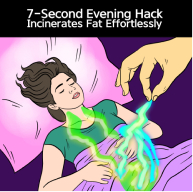Postpartum depression (PPD) is a profound mental health challenge faced by many women following childbirth. It frequently manifests as sustained sadness, anxiety, fatigue, and difficulty bonding with the newborn, affecting approximately one in eight to one in seven mothers in the United States. Understanding the causes, symptoms, and treatment options of postpartum depression is vital for empowering women, particularly those over 35, to seek help and foster maternal-infant well-being.
Understanding the Causes of Postpartum Depression
Postpartum depression arises from a complex interplay of biological, psychological, and social factors. It is not caused by a single source but rather a combination of risk factors that increase vulnerability during the postpartum period.
Biological and Genetic Factors
Rapid hormonal changes after delivery, especially the sharp decline in estrogen and progesterone, significantly affect brain neurochemistry, contributing to mood instability. Genetic predispositions, such as a personal or family history of depression or anxiety, further heighten the risk of developing PPD. Additionally, medical factors like thyroid imbalances and previous mood disorders play pivotal roles.
Psychological and Emotional Contributors
Women with a history of antenatal depression and anxiety face markedly higher susceptibility. The transition to motherhood, especially for first-time mothers, challenges self-identity and emotional resilience. Feelings of inadequacy, unrealistic societal expectations, and a history of trauma or abuse can exacerbate depressive symptoms.
Socioeconomic and Environmental Stressors
Financial instability, housing insecurities, and stressful life events such as job loss or relational conflicts place additional burden. Lack of adequate social support, whether emotional or practical, from partners, family, or community networks can create a sense of isolation and deepen vulnerability. Low socioeconomic status and younger maternal age also contribute substantially to risk.
These multifaceted causes emphasize the need for comprehensive screening and interventions that address diverse contributing factors, especially within vulnerable populations.
Recognizing Postpartum Depression: Symptoms and Diagnosis
Differentiating postpartum depression from the common “baby blues” is critical; while baby blues usually resolve within two weeks post-delivery, PPD symptoms are more severe and persistent.
Key Postpartum Depression Symptoms
Women experiencing postpartum depression typically report:
- Persistent feelings of sadness and hopelessness
- Loss of interest or pleasure in activities
- Significant changes in appetite or weight
- Sleep disturbances including insomnia or excessive sleep
- Psychomotor agitation or sluggishness
- Feelings of guilt or worthlessness
- Difficulty concentrating or making decisions
- Intense fatigue and irritability
- Thoughts of self-harm or harm toward the baby in severe cases
Diagnostic Criteria and Screening Tools
The Diagnostic and Statistical Manual of Mental Disorders (DSM-5) classifies peripartum depression as a major depressive disorder occurring during pregnancy or within four weeks postpartum but acknowledges symptoms can arise up to one year after birth. Diagnosis requires five or more symptoms lasting at least two weeks, with significant impairment in daily functioning.
Validated screening tools include:
- Edinburgh Postnatal Depression Scale (EPDS), focusing specifically on postpartum emotional symptoms
- Patient Health Questionnaire-9 (PHQ-9), a broader depression screening
- Postpartum Depression Screening Scale (PDSS), a comprehensive symptom assessment
Routine screening at prenatal visits, postpartum checkups, and within well-woman care is crucial. Early identification supports timely intervention and improved outcomes.[See here]
Effective Treatments for Postpartum Depression
Treatment for postpartum depression varies based on symptom severity and individual circumstances, with an emphasis on both maternal and infant safety.
Psychotherapy
Psychotherapeutic approaches are often frontline treatments, with cognitive-behavioral therapy (CBT) and interpersonal psychotherapy (IPT) widely endorsed. These therapies address negative thought patterns, assist with maternal role transitions, and help improve social support and relationship dynamics.
Pharmacological Interventions
Antidepressants, particularly selective serotonin reuptake inhibitors (SSRIs) such as sertraline, are commonly prescribed. Medication considerations include breastfeeding status and prior treatment responses to optimize safety for mother and baby. For severe or treatment-resistant cases, adjunctive therapies like antipsychotics or mood stabilizers may be warranted.
Novel and Adjunct Treatments
Recent FDA approval of brexanolone, a neurosteroid targeting the unique neurobiological changes in PPD, offers rapid symptom relief, sometimes within days. Non-pharmacological somatic therapies such as bright light therapy and vagal nerve stimulation are emerging alternatives, especially valuable for women concerned about medication side effects.
Supportive and Community Interventions
Support groups, peer counseling, and social support enhancement play a valuable role in recovery. Programs like the Reach Out, Stand Strong, Essentials for New Mothers (ROSE) foster coping skills, stress management, and social network building, significantly reducing postpartum depression incidence.
Timely, integrated treatment approaches combining psychotherapy, pharmacotherapy, and social support yield the best outcomes in managing postpartum depression.
Conclusion
Postpartum depression is a multifaceted condition with substantial implications for maternal and child health. Understanding its complex causes, recognizing persistent symptoms distinct from baby blues, and accessing comprehensive treatment options empowers women to regain well-being and nurture healthy family dynamics. Routine screening and multidimensional support, including evidence-based therapies and social interventions, are vital. Women experiencing symptoms should seek professional guidance promptly to initiate personalized care plans tailored to their unique needs.
If you or someone you know is struggling with postpartum depression, reach out to your healthcare provider for screening and support. Recovery is possible, and help is available.
Frequently Asked Questions (FAQs)
Q1: How do I know if what I’m experiencing is baby blues or postpartum depression?
A1: Baby blues usually start within the first few days postpartum and resolve within two weeks. Symptoms are milder and include mood swings and irritability. If symptoms persist longer than two weeks, intensify, or include severe sadness, hopelessness, or thoughts of harming yourself or the baby, seek medical evaluation for postpartum depression.
Q2: Can I take antidepressants while breastfeeding?
A2: Many antidepressants, particularly SSRIs like sertraline, are considered safe during breastfeeding. Discuss all medications with your healthcare provider to ensure the best option for you and your baby.
Q3: What support can help prevent postpartum depression?
A3: Strong social support from partners, family, and community resources, along with psychoeducation and stress management programs, can significantly reduce the risk and severity of postpartum depression.
Q4: How soon after childbirth can postpartum depression start?
A4: Symptoms may emerge anytime during pregnancy or up to one year postpartum, according to current clinical guidelines. Vigilance and screening throughout this period are essential.
Q5: What should I do if I think I have postpartum depression?
A5: Reach out to your healthcare provider for a thorough evaluation and discuss treatment options. Early intervention improves outcomes for both you and your baby.







